The Integration of Woman’s College
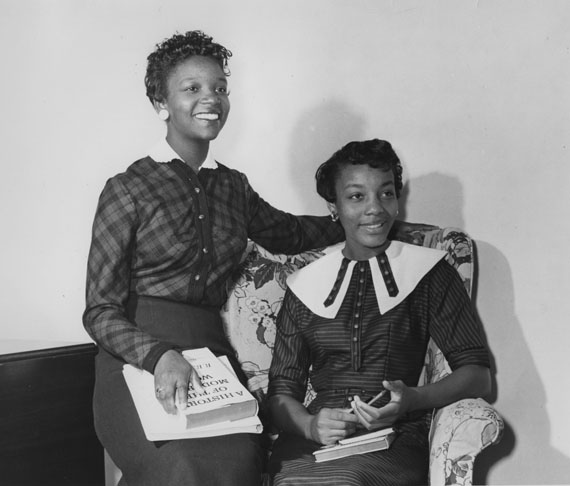
Joanne Smart and Bettye Tillman, class of 1960
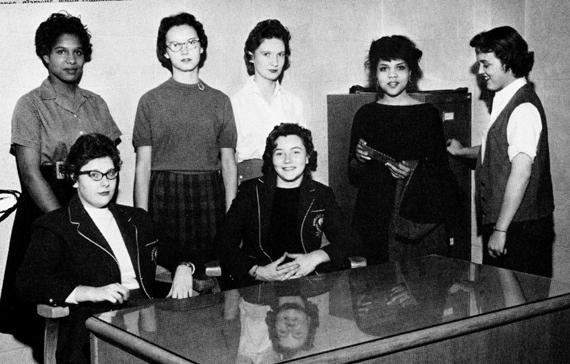
A photograph of the 1960 Carolinian staff, the first integrated newspaper staff at WC
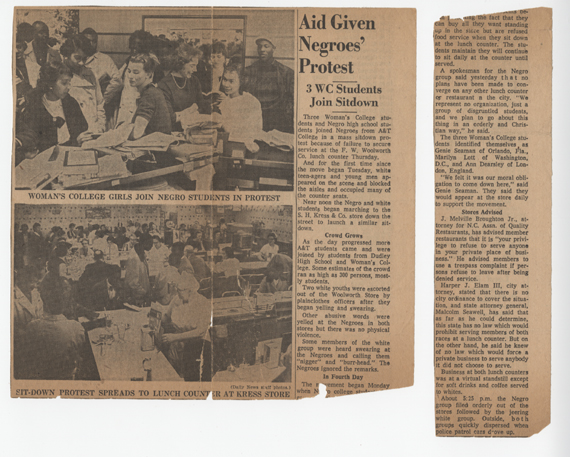
A newspaper article discussing the involvement of Woman’s College students in the 1960 downtown sit-ins
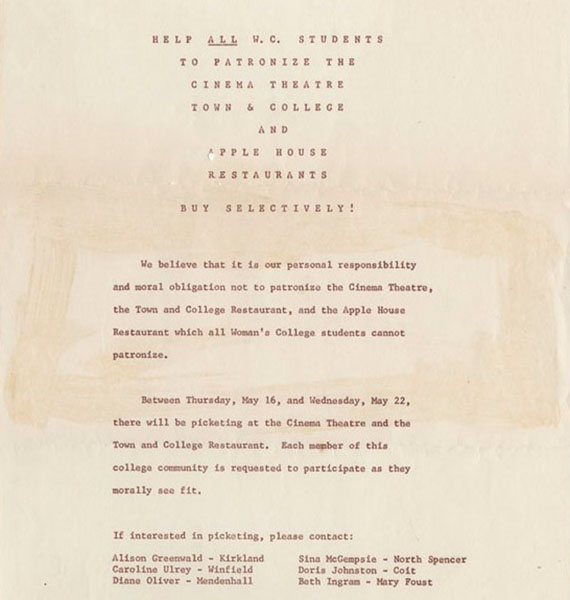
A flyer from 1963 urging WC students to join the boycott and selective buying campaign of segregated businesses on Tate Street

Larry McAdoo was one of the first Black male students at the newly created University of North Carolina at Greensboro
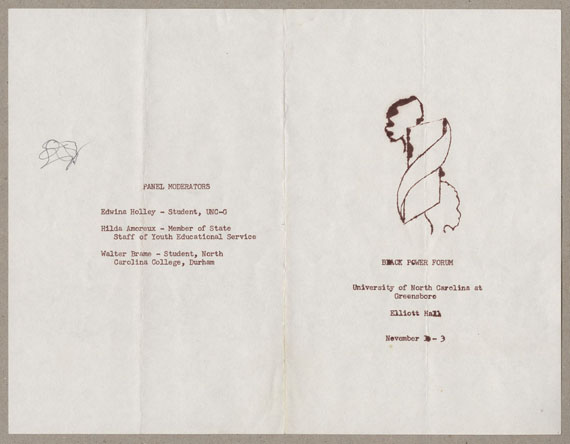
A pamphlet from the controversial 1967 Black Power Forum held on campus
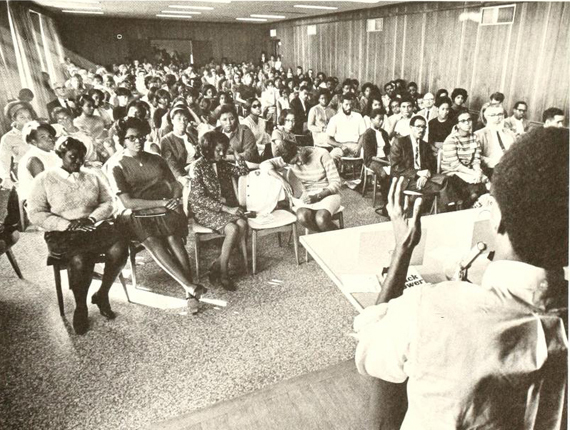
A photograph of the attendants of the 1967 Black Power Forum
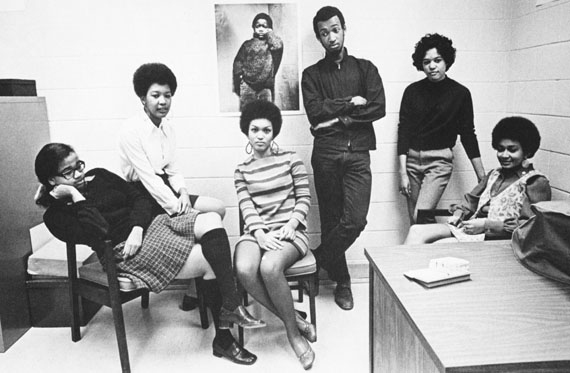
A photograph of the newly created Neo-Black Society
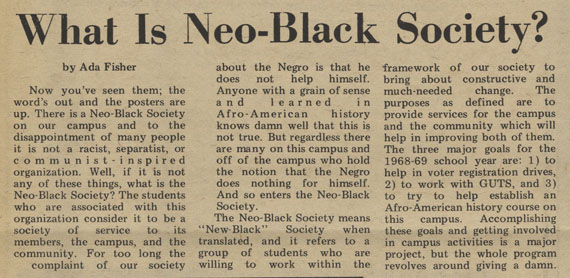
An article by Outstanding Senior Ada Fisher on the need for a Neo-Black Society on campus
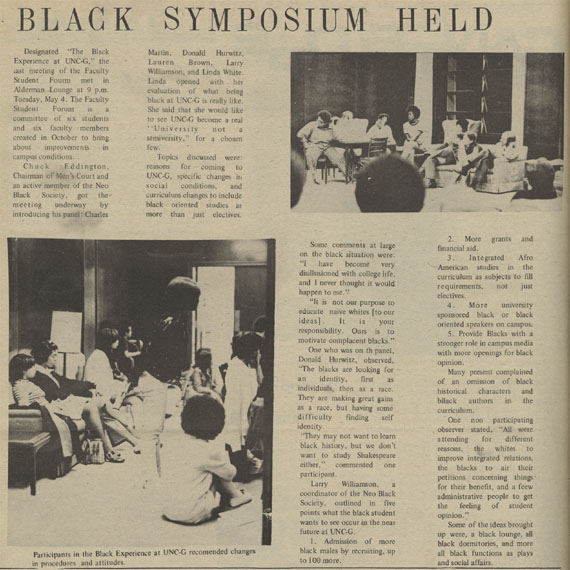
An article discussing the 1969 Black Symposium
Though most students and faculty of Woman’s College were supportive of desegregation of education and encouraged integrated events on campus, WC was integrated in 1956 only after a court ruling. Joanne Smart and Bettye Tillman, both of the class of 1960, were the first black students at Woman’s College. Chancellor Pierson warned the rest of the students against “undue cordiality and exaggerated humanitarianism” and despite his claims that Tillman and Smart would be treated equally, they were housed by themselves in shaw Dormitory.
In 1960, when the A&T Four began their sit-ins of Woolworths, three WC students joined in their protest of segregated businesses in Greensboro. This resulted in months of headlines, and all three of the participants received copious amounts of hate mail and threats.
When students began a selective buying campaign of segregated businesses on Tate Street, the WC legislature officially supported them and their efforts. Months of demonstrations and unrest throughout the city led to the integration of the Tate Street businesses and by the fall of 1963, 40% of Greensboro businesses were desegregated.
Coeducation, and the first black male students, came in 1964, and was met with much more vocal opposition than the integration of WC. Throughout the rest of the 1960’s, the enrollment of black students began growing at a snail’s pace, though the students fought to have their voices heard through a variety of means, including the 1967 Black Power Forum, creation of the Neo-Black Society in 1968 and the Black Symposium in 1970.
By Samantha Way, SCUA volunteer, Spring 2014